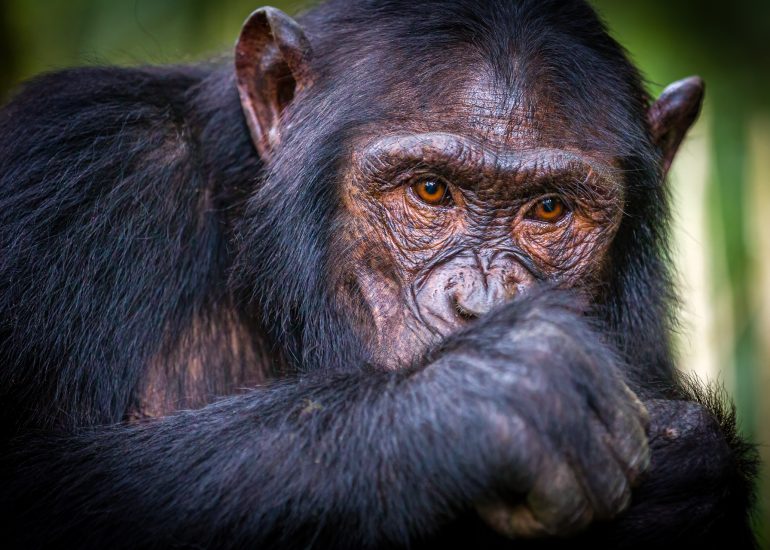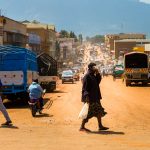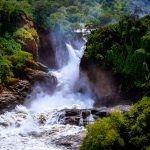Uganda
Journal
The Pearl Of Africa
Part 2
Day 3
From Jinja to Sipi
The journey from Jinja to Sipi Falls in Uganda takes us through some of the most beautiful and diverse landscapes in the country. Starting from Jinja, we drive eastward through Mbale town towards the town of Kapchorwa. Along the way, we pass through several small towns and villages, where we can catch glimpses of rural Ugandan life. We also see vast greenery of sugarcane and banana plantations that stretch out to the horizon.
As we get closer to Kapchorwa, the scenery becomes more dramatic, with steep hills and cliffs lining the road. We start to see stunning views of the nearby Mount Elgon (4321m) an extinct volcano that straddles the Uganda-Kenya border. Mount Elgon is known as the 4th highest peak in Africa and it is shared between Uganda and Kenya.
The road to the Sipi Falls area is winding and can be a bit bumpy in places, but the views are breathtaking. Tea plantations and coffee farms dotting the hillsides, and if you’re lucky, you may spot some of the local wildlife, including monkeys, baboons, and colorful birds.
Finally, you’ll arrive at Sipi Falls, a series of three waterfalls nestled in the foothills of Mount Elgon. You can take a guided hike to explore the falls and the surrounding area, which is also home to several traditional villages and cultural sites. Along the way, you’ll encounter stunning views of the falls, lush greenery, and the unique rock formations that make this area so special. Overall, the journey from Jinja to Sipi Falls is a must-do for anyone visiting Uganda, offering a glimpse into the country’s rich cultural heritage and natural beauty.
The plan today is to have a beautiful walk to the 3 waterfalls since this area is known for its stunning panoramas and nice villages. In the evening we plan to go for sunset viewing and the panoramic views of the Karimojong plains.
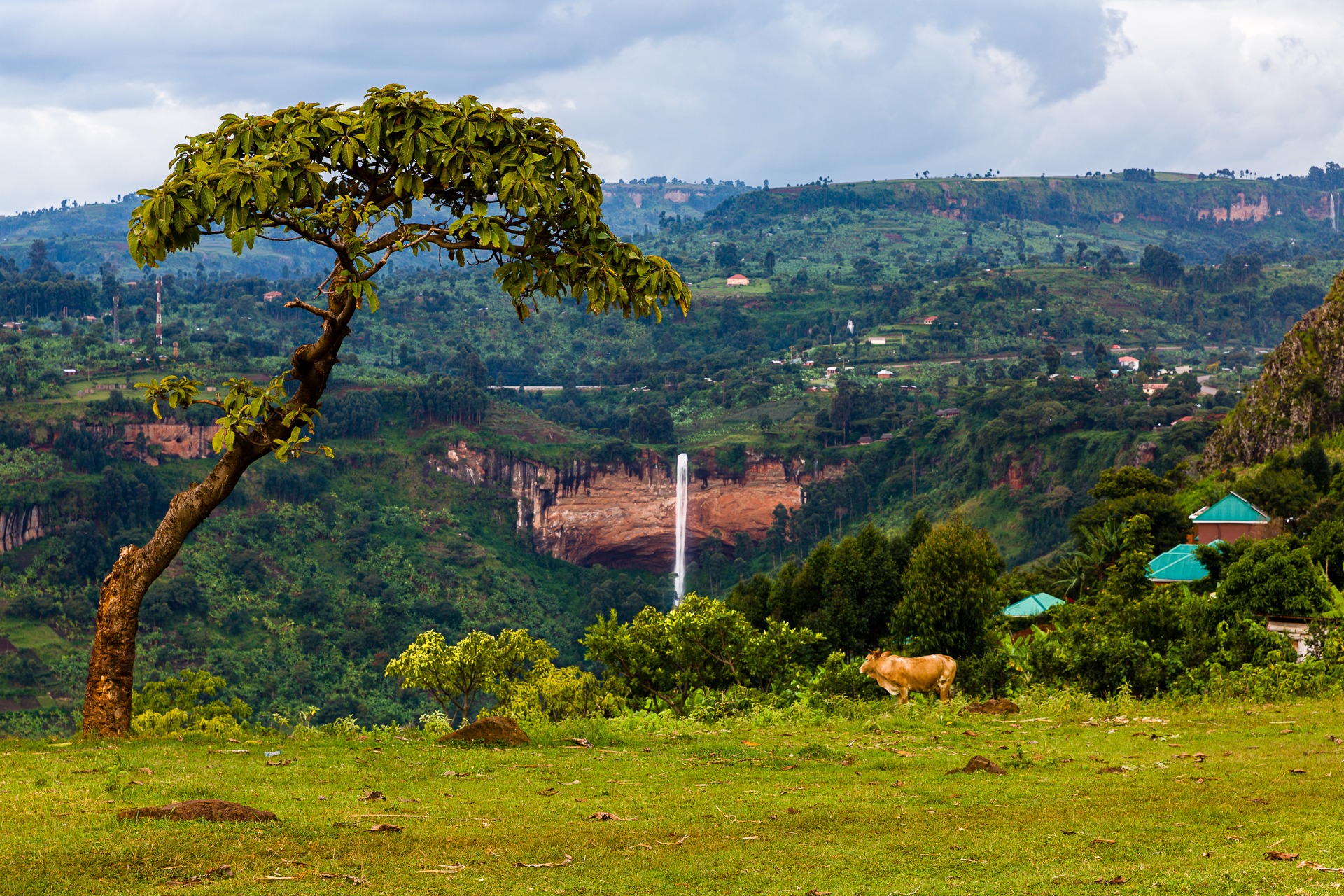
Hike to the Falls
The Sipi Falls is the highest Waterfall in Uganda and located at an altitude of 1775 meter close to the small trading center of Sipi. The village overlooks the 99 m high part of the Sipi Falls the last in a series of three waterfalls. They cascade down into the Kyoga Basin.
The falls were named after the Sipi River, which was named after a locally grown plant called „Sep“. The plant resembles a wild banana and is often used for medical purposes against measles and fevers.
The noise is present as soon as we leave the car at our residence, the Sipi River Lodge.
The air is humid and it is unexpected cold. The climate here is cooler than in the rest of the country and though the weather tends to be pleasant all year round, there are dusty clouds around us. The best time to visit the area is during the dry season from June to August and from December to March. However we are here and it is September. Parts of Uganda are much dryer than usual still here the climate is very normal for the region.
Visiting all three waterfalls involves a 7 km loop hike which can be a bit more demanding especially after a rain. There is an option to visit two parts of the falls through a combination of driving and short walks, although we would recommend the walk through banana and coffee plantation. You will have different views and get a good impression from different angle on the different part of the falls. The total hike takes usually 3 hours. If you want to find good angles for photos it might take longer.
For the majority of the track we follow the river which makes it easy to stay on track and it leads us through farmlands and local communities.
Definitely you should walk into the caves behind the falls. A beautiful and unusual perspective will be offered. For the photographers – bring a tripod – most probably you are going to shoot a HDR or multi exposure picture.
Recommendations
As an accommodation we would recommend the Sipi River Lodge. From the lodge you can have – depending on the hut you are going to have – a nice view on the falls and within a 10 minutes walk you are underneath the second fall. Simply beautiful. When you want to visit them please hire a local guide. The guides will explain you on the tour a lot about the area, the history and many details about the falls. With the employment of a local guide you support the local communities. In addition to that it is helpful as the trails are not clearly marked sometimes. Thanks. Visiting the Sipi Falls is one of the top things to do while visiting Uganda.
Sundowner with view on the Karimojong Plains
For the evening ask you driver/guide to go to a sunset viewing and for panoramic views of the Karimojong plains. From here you have a beautiful view also on the Sipi Fall again. This is the perfect final for a perfect day.
The Karimojong plains are a vast, semi-arid region located in northeastern Uganda, inhabited predominantly by the Karimojong people. The area is characterized by grassy savannas, rocky outcrops, and occasional patches of forest, and is known for its abundant wildlife, including elephants, lions, zebras, and giraffes. The Karimojong people are traditionally pastoralists, known for their cattle-keeping practices, but also engage in small-scale agriculture and hunting. The region has faced significant challenges in recent decades, including drought, conflict, and poverty, but has also seen efforts to promote sustainable development and conservation.

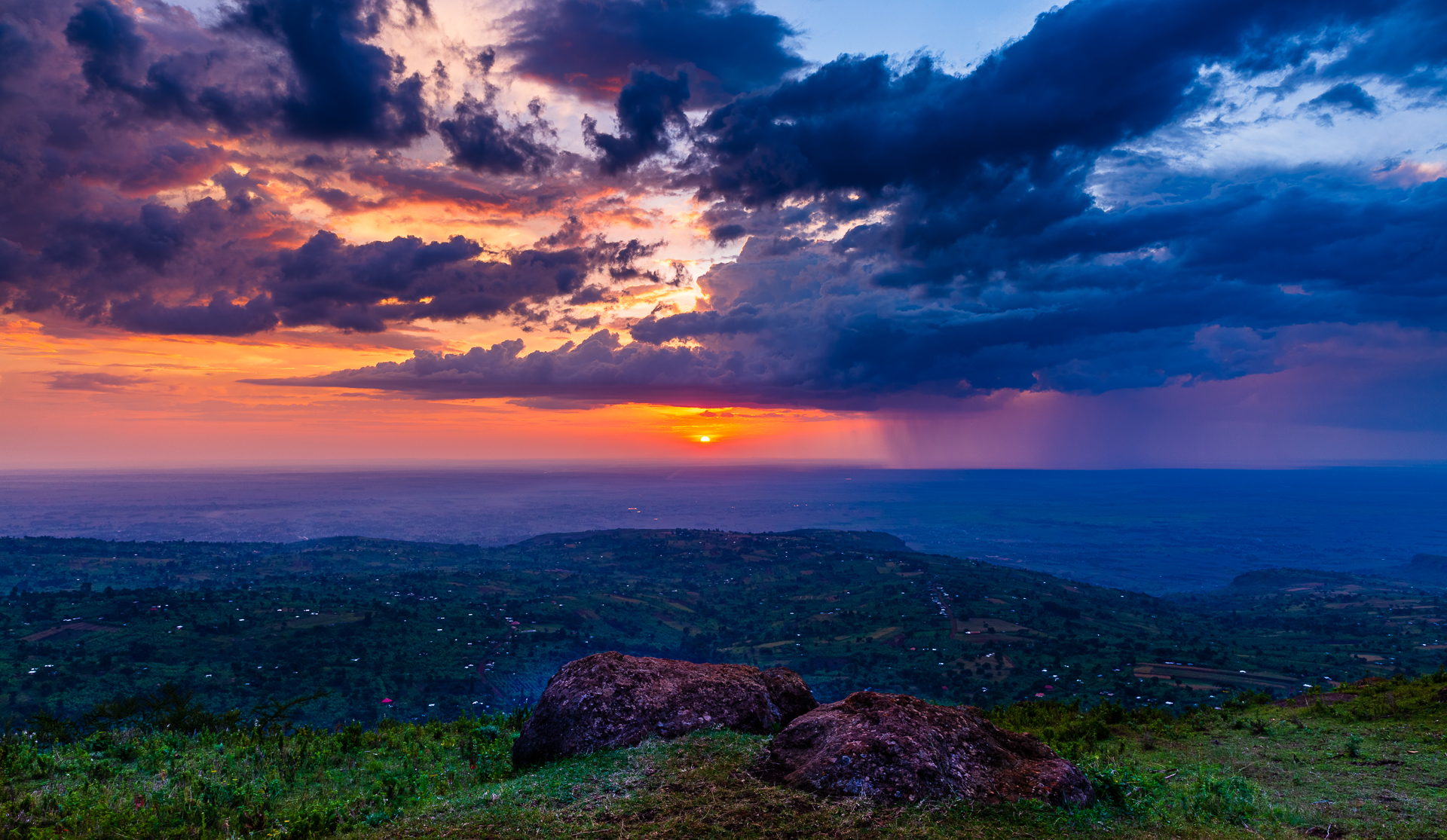
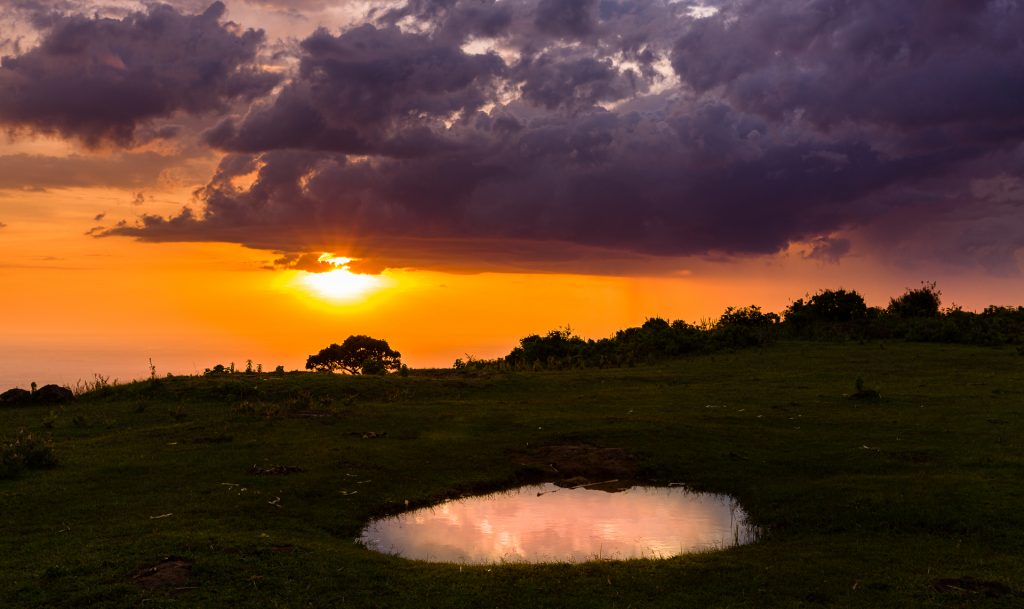
Sundowner with view on the Karimojong Plains
For the evening ask you driver/guide to go to a sunset viewing and for panoramic views of the Karimojong plains. From here you have a beautiful view also on the Sipi Fall again. This is the perfect final for a perfect day.
The Karimojong plains are a vast, semi-arid region located in northeastern Uganda, inhabited predominantly by the Karimojong people. The area is characterized by grassy savannas, rocky outcrops, and occasional patches of forest, and is known for its abundant wildlife, including elephants, lions, zebras, and giraffes. The Karimojong people are traditionally pastoralists, known for their cattle-keeping practices, but also engage in small-scale agriculture and hunting. The region has faced significant challenges in recent decades, including drought, conflict, and poverty, but has also seen efforts to promote sustainable development and conservation.
Day 4
Coffee Plantation
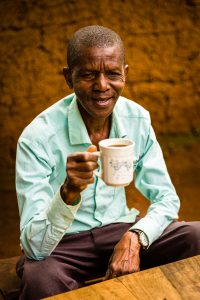
Coffee is a major crop in the areas around Mount Elgon.The region is known for producing high-quality Arabica coffee, which is grown by small-scale farmers on the mountain slopes. The coffee here is typically shade-grown, which means it is cultivated under a canopy of trees, providing important ecological benefits such as soil conservation, biodiversity conservation, and carbon sequestration. The region has also been the site of various initiatives aimed at promoting sustainable coffee production and improving the livelihoods of local farmers, including through the development of cooperatives and the adoption of organic farming practices. The coffee produced in the Mount Elgon region is highly sought after in international markets, and is recognized for its distinctive flavor profile, which is characterized by notes of chocolate, citrus, and floral aromas.
If you love coffee as much as I do, then it’s definitely worth reading on. This is all about coffee cultivation and plantation. To be more precise, we take you on a Bugisu Arabica coffee tour.
The Bagisu, also Gisu, Gishu, Masaba or Sokwia, are an ethnic group in eastern Uganda and culturally closely related to the Bukusu in Kenya. The Bagisu live primarily in the Mbale District on the slopes of Mount Elgon. They speak a dialect of the Bantu Masaaba called Lugisu, which speakers of other Masaaba dialects understand easily. They are known for working the Bugisu Arabica coffee in the area. This type of coffee only thrives at altitudes of 1600 to 1900 m. The slopes of Mount Elgon have fertile volcanic soil in which Arabica coffee thrives very well. Combined with the favorable climate and regular rainfall, the region is ideal for coffee growing. Coffee cultivation is the main economic activity and generates the main income for the people in the area.
We visit a coffee farm and Mike, the owner, explains in detail how the coffee is grown, cared for and harvested and of course how it is processed properly to create a good cup of it. We roam the farm with Mike, plant our own coffee tree and have to promise to come back in 4 years for the harvest.
Today we’re picking some coffee cherries from a different tree. Mike shows us how careful you have to be. Everything is done by hand. Cherry for cherry is picked. However, the infructescence must remain on the plant. That requires a bit of finesse.
Planting and Harvesting
We harvest enough coffee cherries so that we can later have a cup of coffee with Mike and with Paul, our guide today. But the gods put sweat before pleasure.
After the outer shell has been removed by a mechanical grinder, it is now time to loosen the inner shell of the very soft and flexible coffee bean in a large wooden mortar. This inner skin is then sorted out by manual „wind sorting“. The bean remains. Now it has to be roasted.
Mike makes a fire and we dump the beans into a metal bowl. With constant stirring, the beans slowly take on their usual color. Now we can have coffee right away.
Are you kidding me? Are you serious when you say that! First the beans have to be ground. The procedure is the same as before. The beans go into the mortar and then it’s an arduous effort to „ground“ them. This takes about 20-30 minutes and each of the four of us has to grind once.
This is by far the hardest earned coffee of my life. Then it’s finally time. We brew the coffee and at the end pour it through a sieve directly into the cups. Mike’s wife made chapatis for us. Chapatis are a type of pancake. More about Chapatis and their luxury form called Rolex you will read later.
The coffee tastes fantastic. The flavor profile of Bugisu from Uganda is more like an espresso from India or Indonesia – spicy, malty and nutty. Depending on the preparation, the taste in the cup is rounded off with a hint of cherry and velvety chocolate. A coffee as powerful and full of character as its surroundings! Uganda is the 7th largest producer of coffee in the world. Most coffees are grown on small local farms.
It is definitely worth visiting such a farm, and maybe you are like me. After the visit, my coffee tastes completely different and whenever I drink coffee I think of Mike and the beautiful farm at the foot of Mount Elgon. There is also the opportunity to buy coffee directly on site. If you are there and visiting the region, support the local people. Go and see how coffee is harvested and processed. You will rediscover coffee and enjoy it with different eyes.
After this experience we proceed our journey. Via Lira, where we have a overnight stay we drive towards Murchison Falls Nationalpark. The next adventure lies ahead of us.
Portfolio
Uganda
"Africa has her mysteries, and even a wise man cannot understand them. But a wise man respects them" — Miriam Makeba
Birds Uganda
“Some birds are not meant to be caged, that's all. Their feathers are too bright, their songs too sweet and wild. So you let them go, or when you open the cage to feed them they somehow fly out past you. And the part of you that knows it was wrong to imprison them in the first place rejoices, but still, the place where you live is that much more drab and empty for their departure.” ― Stephen King, Rita Hayworth and Shawshank Redemption
Wildlife Uganda
“The more you learn about the dignity of the gorilla, the more you want to avoid people.” - Diane Fossey



